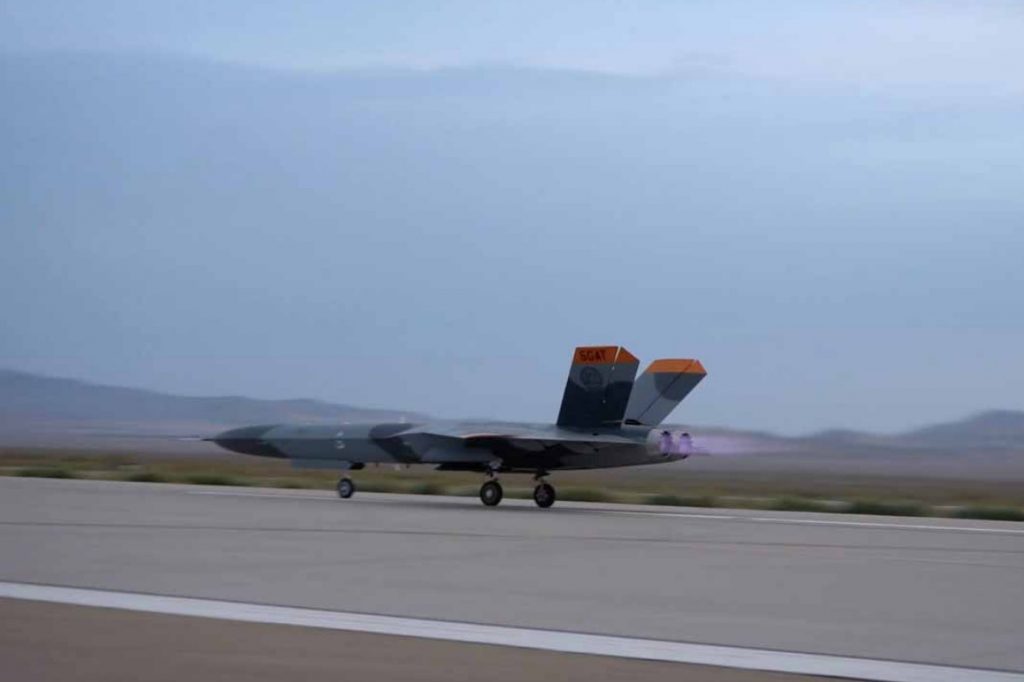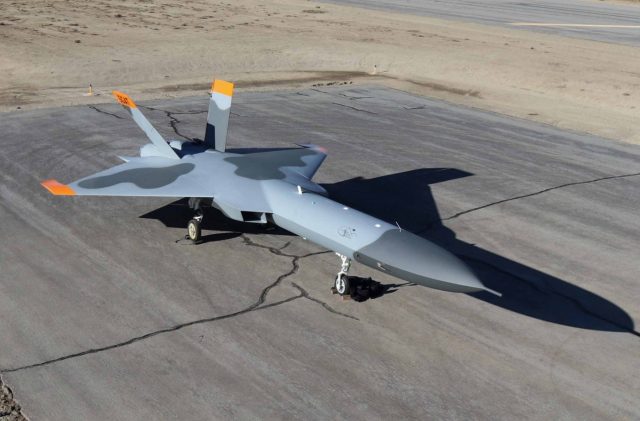A fifth generation aerial target designed to imitate modern threats will take its first flight later this month at Dugway Proving Ground, Utah, the US defense department announced October 14.
The flight will be taking place after the unmanned aerial system completed ground-based testing in September.
Executed by an integrated team of Defense Department personnel and contractors, the testing at Michael Army Airfield verified complete aircraft control, safety procedures and key performance milestones for takeoff and landing. The single prototype executed 24 taxi test events (15 low-speed and nine high-speed) in six days, with no interruptions or major problems.
The office of the director, operational test and evaluation sponsors the 5GAT, which is a full-scale, low-observable air vehicle that represents, more accurately than anything else available, the fifth-generation fighter aircraft threats US forces could face. The low-cost drone is designed to enable air-to-air and surface-to-air platform and weapons test and evaluation, pilot and ground-force training, and the development of tactics, techniques and procedures against a fifth-generation threat.
“To determine whether a system really is combat-credible, we must test it under realistic conditions. That includes putting it up against a realistic threat,” Robert Behler, the director, operational test and evaluation said. “Right now, we lack a test platform that truly represents fifth-generation air capabilities. Filling that gap as soon as possible is absolutely essential to both testing and training.”
Sierra Technical Services, the prime contractor, has taken an innovative approach to building 5GAT, constructing the airframe from composites using soft tooling to reduce cost. The subcontractor, Fast Optimal Engineering, designed major subsystem solutions, including flight control actuation, electrical power, hydraulics, landing gear and steering. The subcontractor, 5D Systems, was responsible for developing the unmanned 5GAT’s complex suite of software. 5GAT utilizes engines and other elements harvested from decommissioned DOD military aircraft, as well as an existing US Army ground-based aircraft control system.
“With 5GAT, we’ve reinvented the typical acquisition process, and have aggressively used innovative program management and contracting processes to accelerate new capability development and ensure cost savings,” Michael Crisp, a retired naval aviator and DOT&E’s deputy director for air warfare said. “We pulled in expertise from ‘greybeards,’ both industry and military, and the vision of our next generation of pilots, US Air Force Academy cadets. We gave STS the freedom to explore cutting-edge design and manufacturing techniques, and got an even bigger bang for the taxpayer buck by recycling government-owned assets.”
Flight testing will begin in late October. Initial flight test objectives include demonstrating 5GAT flight characteristics, various subsystems’ performance and the aircraft’s auto-takeoff and auto-landing functionality. Subsequent flight tests will progressively expand the aircraft’s flight envelope in altitude, speed and greater G-force loading.




























